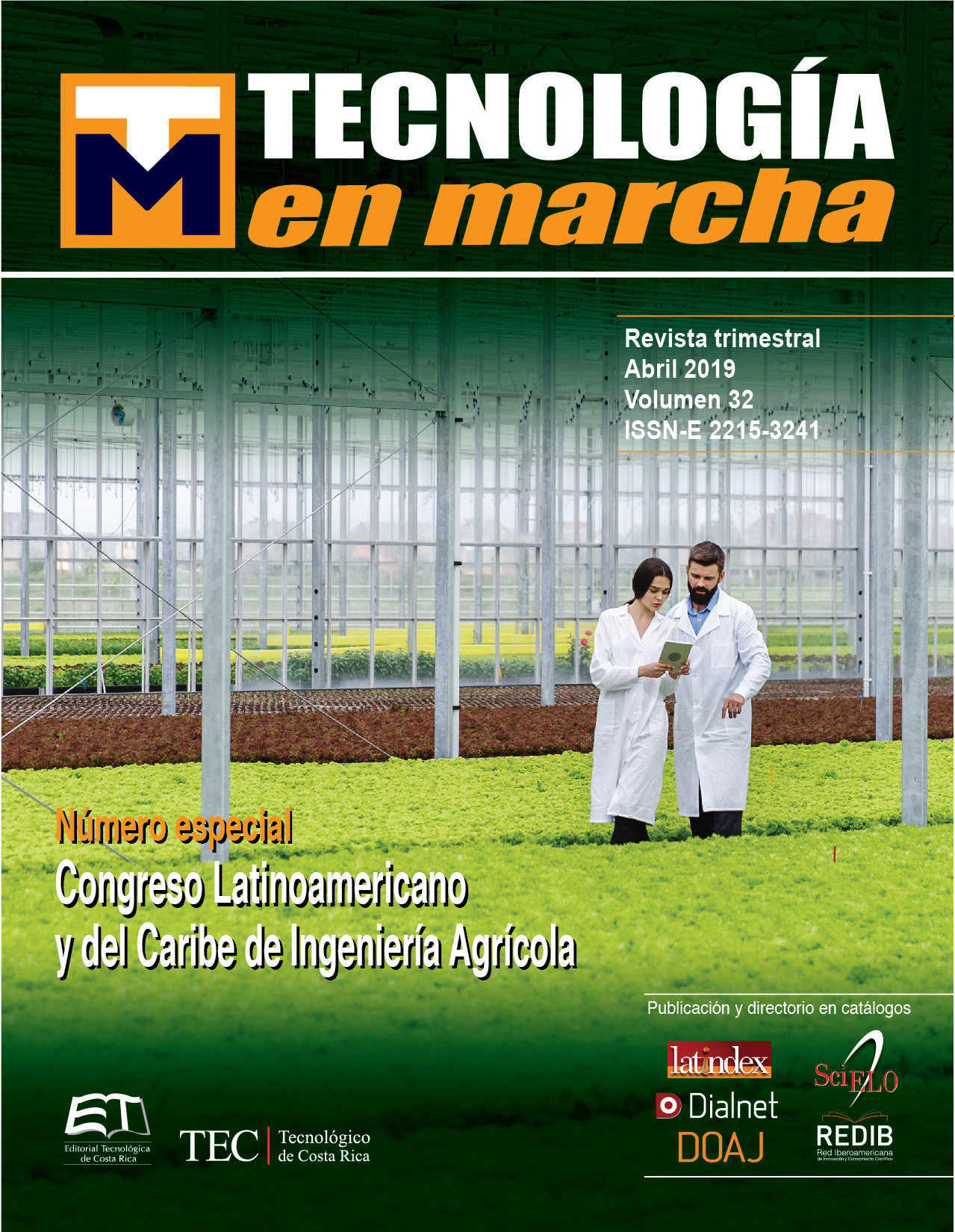Modelling of thin layer radiation drying of coconut
Main Article Content
Abstract
Coconut is a fruit that can be totally used, not only its liquid part but also its solid one, including the eatable section and its residues. The solid part can be used as food and also be processed for later use. Drying is a necessary process for its conservation, for that reason radiation drying was evaluated to establish the relationship between speed and temperature. The experiments were conducted at drying temperatures of 60, 80, 100 and 120°C. Coconut pulp was manually scraped, chopped and homogenized. A dehydrator with heat transfer by radiation was used to conduct the experiments. The moisture content of the samples was determined by mass loss to obtain a constant weight in a thin layer of product. It was determined that during the drying process the moisture content decreased exponentially and Midilli model was found to adjust adequately with a coefficient of determination (R2) above 94%. The temperature dependence of the process was satisfactorily described by an Arrhenius type relationship. An activation energy equal to 60,7 kJ/mol was found over the temperature range investigated in the radiation drying process. The mathematical relation of the drying process is a double exponential that depends directly on the temperature and drying time.
Article Details
Los autores conservan los derechos de autor y ceden a la revista el derecho de la primera publicación y pueda editarlo, reproducirlo, distribuirlo, exhibirlo y comunicarlo en el país y en el extranjero mediante medios impresos y electrónicos. Asimismo, asumen el compromiso sobre cualquier litigio o reclamación relacionada con derechos de propiedad intelectual, exonerando de responsabilidad a la Editorial Tecnológica de Costa Rica. Además, se establece que los autores pueden realizar otros acuerdos contractuales independientes y adicionales para la distribución no exclusiva de la versión del artículo publicado en esta revista (p. ej., incluirlo en un repositorio institucional o publicarlo en un libro) siempre que indiquen claramente que el trabajo se publicó por primera vez en esta revista.

